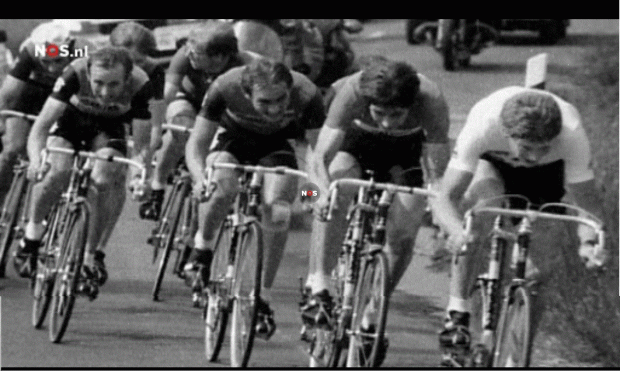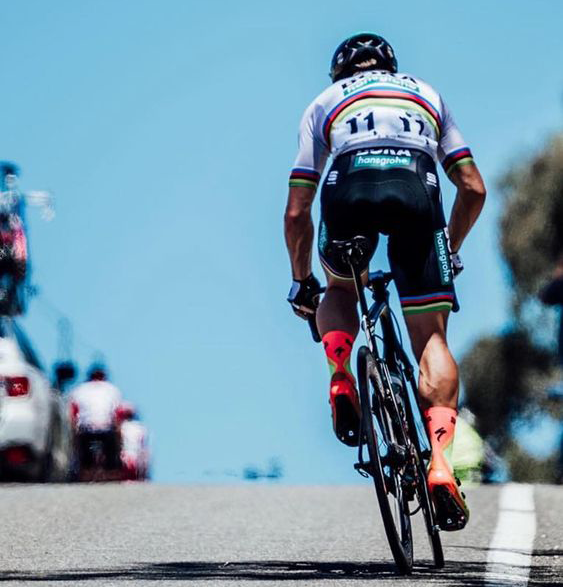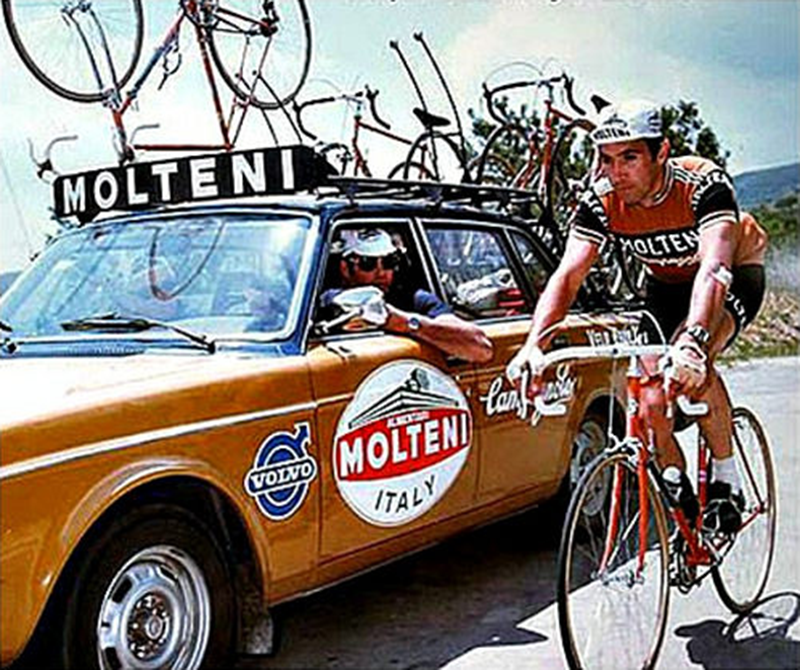Guest Article: Awesome Dutch Guys: Bert Oosterbosch

Ever heard of Bert Oosterbosch? No, neither had I until I came across this excellent (and comprehensive) account from @ErikdR. A story of triumph and tragedy if ever there was one, everything you need to know about the Dutchman’s short career and ultimately, life, is laid out here. Give yourself some weekend reading time and enjoy.
Yours in Cycling, Brett.
Joop Zoetemelk has won the Tour de France once, as you probably know. The year was 1980, and at the time, I was still living in my country of birth, the Netherlands; I was 22 years young and I remember watching Zoetemelk on TV as he came rolling across the finish line on the Champs Élysées, his arm pushed aloft by Gerrie Knetemann who finished at his side. One could argue for ages that this impressive feat could never have been accomplished if Le Blaireau hadn’t been forced to bow out of said Tour because of a dicky knee. True, perhaps – but as the saying goes: you only race against the guys who show up. Jopie won the Tour, and I consider him a worthy victor (and so did Bernhard Hinault himself, by the way, as he stated in an interview).
Zoetemelk was backed by one hell of a team. Consider the stats: The TI-Raleigh bikes for the team were assembled by a man who was allegedly one of the best custom bike-frame makers of his day, Jan LeGrand. The Directeur Sportif was none less than Peter Post, winner of numerous in-door track races as well as the fastest Paris-Roubaix in history, and among Joop’s teammates were legends (at least in the Netherlands) of the sport such as 5 times Amstel Gold race winner and 1979 World Champion Jan Raas, the 1978 World Champion Gerrie Knetemann and the then-reigning Dutch National Champion and climbing fool Johan van der Velde, to name but a few.
They also had a locomotive.
In Dutch, a locomotive is called ‘locomotief’ (go figure) – and that is the nickname that a few Dutch and Flemish journalists of the day as well as some members of the TI-Raleigh team themselves, had bestowed upon a carrot-topped, goofy-grinned, Big-Ring-Grinding, young monster of a time-trial specialist: Dutchman Bert Oosterbosch – one of my favorite racing cyclists of all time.
I became a fan of Bertje, as he was also affectionately referred to, in spite of the fact that he wasn’t the most successful racer of his generation by any standard. He didn’t climb or sprint very well, and as I recall it, he was often seen residing in exactly the wrong part of the peloton when things started getting serious. As a result, it would seem that his palmares – while very impressive – has not quite earned him a top spot in the hall of fame of Dutch cycling.
But Bert Oosterbosch was a cyclist who loved the work. And apart from winning numerous time-trials, he actually did manage to win quite a few races during which he had to share the road with other riders. As I remember it, he often accomplished this by relying on his single tactical advantage, i.e. the fact that, on good days, he could ride longer, harder and faster on a bicycle than just about anybody else. When Bertje finished first in a race that was not a time-trial, he usually did not win by polishing off his opponents’ plates before starting on his own. Rather, he just moved to the head of the field by sheer force and then proceeded relentlessly to grind everybody else into a pulp.
The video to which the link below relates illustrates the point, if somewhat obliquely. It does not contain very much live footage specifically featuring Bertje at work. What it does show, however, is instances of his team-mates and his DS referring to him with what I can only describe as ‘affectionate awe’. Their faces and voices speak volumes when they reminisce about a certain young rider who was so eager to demonstrate his cycling prowess that his teammates literally had to ‘reel him in’ a bit, to prevent him from tearing the legs off his own fellow-riders during Team Time Trials. (Bert Pronk, featured in the video, was (in)famously ridden out of that 1980 Tour by his own teammates on the first day, when he dropped off the back of a TTT at too early a stage, and finished outside the time limit! I like to think that Bert Oosterbosch was primarily to ‘blame’ for this regrettable but also remarkable incident.)
Watch the entire video, by all means, if you feel thus inclined, and if you can tolerate the guttural growls of spoken Dutch (and a snippet of French, by Monsieur le Blaireau lui-même) for 40 minutes. (You may have to yawn your way through a 15-second commercial before the actual video starts – sorry about that…) The link is:
http://wielrennen.blog.nl/tag/ploegentijdrit-ti-raleigh
If you’re pressed for time, you could skip to the bits at 08.20, 11.25 and/or 15.30 (if only for the sound-track – the delicious whirr and hum of several perfectly tuned 1980’s racing bicycles at very high speed), and then watch from 16.22 onward to 17.38. Or you can simply read the following, which is a rough transcript of what is being said in that latter section:
From approximately 16.22: Paul Wellens: “So, the strongest rider; the art of the matter is, that he must restrain himself somewhat, so that he doesn’t pull the entire line to pieces. You need a certain feeling for that, and to be the type of person who can put the team first.” Jan Raas: “A strong rider, who can really ride up a storm in a TTT; if he actually starts to go a lot faster than the rest – that’s not the idea, because he will demolish the other riders. You can only say that he shouldn’t ride harder or demonstrate how much faster he is – no, he just has to stay up there to set the pace for a longer time… if one rider can take a pull for, let’s say, 500 meters, and another rider is so much stronger, then just let him do, for example, 2 kilometers at the front – but preferably at a constant speed. Then, afterwards, the others will still be saying to him: ‘… Man, you were clearly the strongest out there today!'”.
Leo van Vliet: “Bert Oosterbosch was of course the type who, well, he wanted to demonstrate how good he was at this. Of course, as a time trial specialist, Bert hád to show everybody else how good he was at it”. Cees Priem: “Yes, Bert could… some of us could take as much as a kilometer at the front, but Bert would sometimes take two – and the more we praised him, the harder he worked. Bert was simply the best in that field”.
Peter Post: “He would often forget that a TTT was actually 75 or 80 kilometers long. We even did one of 100 km once. He forgot that, sometimes! He so loved to ride – and to ride fast – and he was so eager to show what he could do… Etc…” 17.38/Transcript End.
Love the work, indeed… I’m not sure whether anyone has coined the phrase “Heaven is having earned the respect of your peers” – but if not, I’d like to do so now. It seems clear to me that Bertje’s colleagues, who were, as mentioned, among the best racing cyclists around at the time, held him in very, very high esteem.
Bert Oosterbosch occasionally struggled with health issues during his career: he contracted meningitis twice, and severe knee problems forced him to give up professional cycling in 1988. Shockingly, he died in 1989 of sudden cardiac arrest, at the age of 32. His tragic death inevitably triggered speculations about drug abuse. We’ll probably never know the exact circumstances of his early demise, but regardless of the cause, his death at such a young age was of course terribly saddening.
I am grateful for having been around when he plied his trade, because in my humble opinion, he did so with admirable gusto and enthusiasm. I’m convinced that Bert Oosterbosch contributed a great deal to the second-ever Tour de France win by a Dutchman – but what I liked most about him was the fact that he radiated how proud and happy he was to be a racing cyclist, to such a degree that it became contagious and almost tangible. He played a big role in kindling my own interest and respect for the sport.
[dmalbum path=”/velominati.com/content/Photo Galleries/brettok@velominati.com/Oosterbosch/”/]
As is often the case, a photograph – particularly a black-and-white one – is worth a thousand words. I grabbed the lead photo for this write-up from the YouTube video, and I find it very eloquent…
That’s Johan van der Velde in second position, in his National Champion’s jersey, and I think it’s Bert Pronk in third. Pain Cave, anyone? The next grimacing rider in the line is, of course, Joop Zoetemelk. Incredibly, to the right behind Zoetemelk you see Jan Raas actually talking to the rider on his right. (Jan went on to become a DS himself, and I’m fascinated by how he is already showing signs here of being the man with the plan, so to speak).
Toe clips, lugged steel frames, curvy and round alloy handlebars with brake cables merrily sprouting… Hairdo’s ruffled by the strong wind they’re creating themselves (I like to think that all caps save the one at far left have been blown clean off by the minor storm being whipped up by the rider in the lead). Teeth grinding, both those made of metal and the enamel ones. You can hear the lactic acid building in those legs.
Bert is at the front, of course, in the white jersey. Note how much lower he holds his head in relation to his shoulders, compared to the others – with the ginger hair in turmoil. Massive guns blazing, totally at the V-locus; completely focused – and yet, from the looks of it, smiling, almost? Busy doing what he did best.
R.I.P. Bertje – and thanks. It was fantastic to watch you at work.

